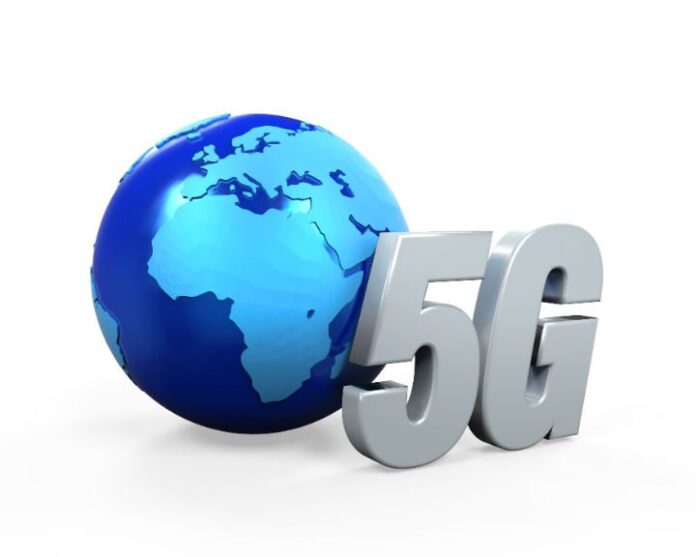Last week I attended the inaugural 5G Forum event that was organized by Informa in sunny Palo Alto, Calif. The location for this new event was interesting, especially considering that most of the discussions centered around what “5G” will be and what it will do. Palo Alto, of course, sits in the heart of Silicon Valley, so there was strong attendance from the large tech companies, IP and Internet-centric startups, and new wireless startups looking to mix up the status quo. And of course, the mobile operators and major mobile infrastructure vendors from Europe, the U.S. and Asia were there en masse. All in all, a great mix of attendees.
One of the most interesting sessions was held the morning of the second day (full disclosure: I was the event chair for this portion of the program), when the attendees split into various roundtable groups to discuss specific issues. Each table was asked to debate a specific topic and then come up with a half-dozen conclusions; these could be issues that would need addressing, specific action items or questions that could not yet be answered.
The main takeaways from the discussions were:
What is 5G?
This discussion solicited a lot of responses, as you can imagine. The basic conclusion is that 5G is not simply a new technology family (as 3G and LTE were), but rather is an extension of the LTE technologies into new architectures. What has not been decided is which release of LTE will officially qualify as 5G.
Similarly, the expectation is that 5G will require significant densification of the network – more cells and more content/services at the edge – and this will necessarily involve the use of millimeter-wave and centimeter-wave spectrum. But exactly what bands will be used is open for debate.
The final question is if 5G is really “cellular” in nature or if the architecture is something new. The notion of a single cell handling a connection until the subscriber physically moves may be outdated; a new approach based on bandwidth demands or latency demands may be needed.
5G is a loose framework and a timeline
This notion is supported by the idea that 5G will use developments of the LTE air interface, but will require significant changes to the network core architecture. That said, 5G will still need very tight integration with LTE; this is not a “rip and replace” evolution from 4G to 5G.
5G challenges are far more than technical
This was raised in a couple of different discussions. While the industry to date has been discussing technical aspects of 5G, spectrum, air interface, latency, etc., there is a belief that the bigger issues will be political and especially intellectual property rights related. The fact that 5G will likely be developed as a true global standard makes the IPR issue more pressing.
Densification brings many challenges
Aside from the obvious challenges of locating many more, smaller cells – zoning, planning, locations, landlords, etc. – there is also the significant challenge of providing low-latency fronthaul/backhaul to all the new cells. These cells are likely to be smaller than today’s “small” cells (think of them as “micro” cells) and could be located on street signs, billboards, etc. How will fronthaul/backhaul be provided cost-effectively to meet the needs of low-latency?
Network slicing is an integral part of 5G
The concept of network slicing was raised in several sessions during the conference. In essence, the 5G network will need to support not only a wide range of industry verticals – health care and finance were mentioned most often – but also a wide range of operator business models, including mobile virtual network operators. So the 5G network may be used by a health care provider to support patients and providers and also by an MVNO. The network is therefore “sliced” horizontally and vertically.
How do you manage quality of experience?
This discussion centered on the belief, or fear, that today’s network management techniques may not be enough to provide the required quality of experience for 5G. For example, it is likely that physical probes in the network will not be enough to manage all the various traffic types, network slices and services. New approaches may be needed.
Cloud RAN may need a rethink
One of the critical performance aspects of 5G is low latency – low enough to support connected cars and autonomous driving, for example. Consider that at 60 mph, a car moves just over 1 inch per millisecond. Today’s LTE networks have a latency of around 50 milliseconds, which means the car has moved 4 feet before the network reacts – plenty of room for a collision. So if cloud radio access network is to be part of the densification of networks to get to 5G, lower latency solutions are likely to be needed. This may require new architectures and connection protocols. In short, the performance of the cloud RAN is likely to be critical to the overall performance of 5G.
5G needs new business models and revenue streams
There was general agreement at the conference that the wireless industry has exhausted the potential of the current model in which the end user pays the mobile operator for providing mobile data and connectivity. The industry has “squeezed every drop out of the current model.” For 5G – and to justify the investment needed – new revenue streams will be needed, including the ability to provide an alternative for broadband service to the home, since fiber deployment is slow and expensive.
Network slicing will necessarily lead to new business models, but the platforms need to be in place to support this evolution; simply producing a monthly bill is not enough. And this will require a monetization of machine-to-machine and the “Internet of Things.”
The billing platforms will need the granularity and flexibility to deal with everything from a smartphone and tablet to vehicle-to-vehicle communications to a connected combine harvester across a fully heterogeneous network. The general view is that there is real money in big-business applications and relatively little potential revenue in consumer-based IoT apps. We shall see how this develops.
Security is needed, obviously, but what kind?
Security is an obvious need for 5G, but how will this be implemented? At what cost? How will different levels of security be implemented?
Full network virtualization is an enabler of 5G
No argument here, and it is clear that the industry is well down the virtualization path. More flexibility will be needed to enable 5G, and it is clear that self-optimizing networks need to continue to develop and be implemented within the virtualized framework. Virtualization will also extend to test beds to test both the air links and the core networks.
Looking at this list, it is clear that there is some way to go before the vision of 5G is realized, after the industry decides what 5G actually is, of course. But the steps being taken now – cloud RAN, small cells, network virtualization, etc. – will enable 5G and should be seen as critical to future success. Investment now will reap dividends in 2020 and beyond. But this does not mean there is not a lot of heavy lifting left to do. There is!
Iain Gillott, the founder and president of iGR, is an acknowledged wireless and mobile industry authority and an accomplished presenter. Gillott has been involved in the wireless industry, as both a vendor and analyst, for more than 20 years. IGR was founded in 2000 as iGillottResearch in order to provide in-depth market analysis and data focused exclusively on the wireless and mobile industry. Before founding iGR, Gillott was a group VP in IDC’s telecommunications practice, managing IDC’s worldwide research on wireless and mobile communications and Internet access, telecom brands, residential and small business telecommunications and telecom billing services. Prior to joining IDC, Gillott was in various technical roles and a proposal manager at EDS (now Hewlett-Packard), responsible for preparing new business proposals to wireless and mobile operators.
Editor’s Note: Welcome to Analyst Angle. We’ve collected a group of the industry’s leading analysts to give their outlook on the hot topics in the wireless industry.


